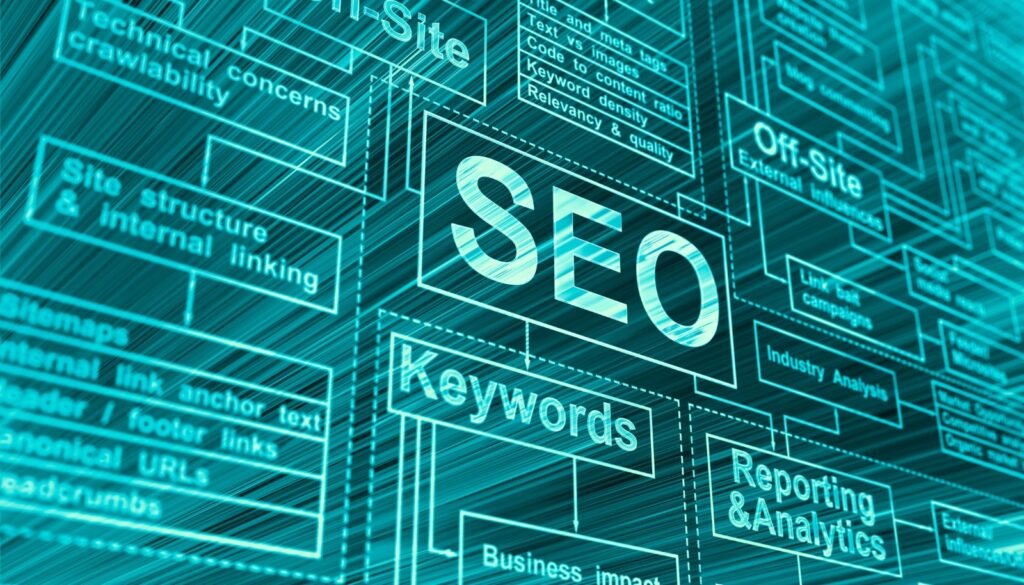If you want your website to rank higher on search engines, you can’t ignore on-page SEO. It’s the foundation of any successful SEO strategy and directly impacts how easily search engines understand your content. Done right, it helps your pages show up for the right keywords, attract more visitors, and turn clicks into customers.
This guide will walk you through the essentials of on-page SEO so you can start optimizing like a pro.
What Is On-Page SEO?
On-page SEO refers to the process of optimizing individual pages on your website so that they rank higher in search engine results. Unlike off-page SEO (which focuses on backlinks and external signals), on-page SEO is all about the content and elements within your control — from text and images to page speed and structure.
Why On-Page SEO Matters
Better Search Visibility
Helps your site appear for the right queries.
Improved User Experience
Makes your site easier to read and navigate.
Higher Conversion Rates
Relevant, optimized content converts better.
Long-Term Value
A one-time optimization can bring results for months or years.
Key On-Page SEO Elements
1. Title Tags
Your title tag is the clickable headline shown on search engines.
Tips:
- Keep it under 60 characters.
- Place your main keyword near the start.
- Make it compelling to boost click-through rates.
Example:
Instead of “Home | ABC Services,” use “Affordable Digital Marketing Services in Mumbai | ABC Agency.”
2. Meta Descriptions
The short snippet under your title in search results.
Tips:
- Keep it under 160 characters.
- Include your target keyword naturally.
- Highlight your unique selling point.
Example:
“Boost your online presence with expert SEO services in Navi Mumbai. Get higher rankings and more leads today.”
3. Headings (H1, H2, H3…)
Headings structure your content for both users and search engines.
Tips:
- Only one H1 per page — it should describe the main topic.
- Use H2 and H3 to organize subtopics.
- Naturally include relevant keywords.
4. URL Structure
Short, clean, keyword-rich URLs are easier for both humans and search engines to understand.
Example:
Use: www.example.com/on-page-seo-tips
Avoid: www.example.com/pageid=1234?ref=seo
5. Keyword Optimization
Keywords help search engines understand your content.
Tips:
- Target one primary keyword per page.
- Use related terms and synonyms to avoid keyword stuffing.
- Place keywords in titles, headings, first paragraph, and image alt text.
6. Internal Linking
Links to other relevant pages on your site improve crawlability and user navigation.
Example:
In a blog about on-page SEO, link to another post on “Technical SEO Basics.”
7. Image Optimization
Images make content engaging, but large files can slow your site down.
Tips:
- Compress images without losing quality.
- Use descriptive, keyword-rich file names.
- Add alt text for accessibility and SEO.
8. Mobile-Friendliness
With most searches happening on mobile devices, a responsive design is non-negotiable. Use Google’s Mobile-Friendly Test to check.
9. Page Speed
Slow websites hurt rankings and user experience.
Tips:
- Use caching plugins.
- Compress images.
- Minimize CSS and JavaScript files.
10. Content Quality
At the heart of on-page SEO is valuable, well-structured content.
Tips:
- Provide actionable information.
- Keep paragraphs short.
- Use bullet points and visuals to make reading easier.
On-Page SEO Checklist
- Keyword in title, URL, and first paragraph
- Unique, relevant meta description
- Proper heading hierarchy
- Optimized images with alt text
- Internal links to related pages
- Mobile-friendly and fast loading
- High-quality, valuable content
Final Thoughts
On-page SEO might seem technical at first, but it’s simply about making your website easy for both users and search engines to understand. Start with the basics — title tags, meta descriptions, headings, and quality content — then fine-tune with speed and mobile optimization.
At Digin, we specialize in making on-page SEO effortless and results-driven, so your business can focus on growth while your website climbs the rankings.


